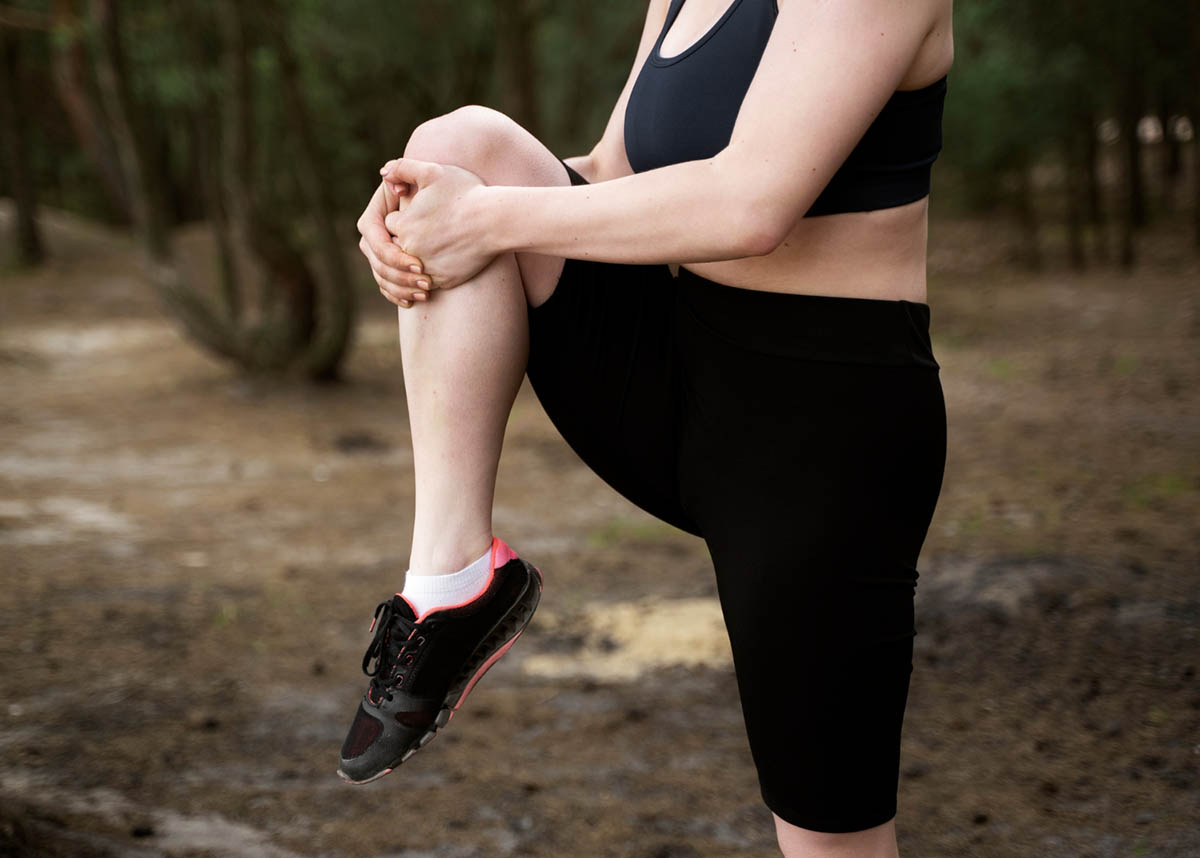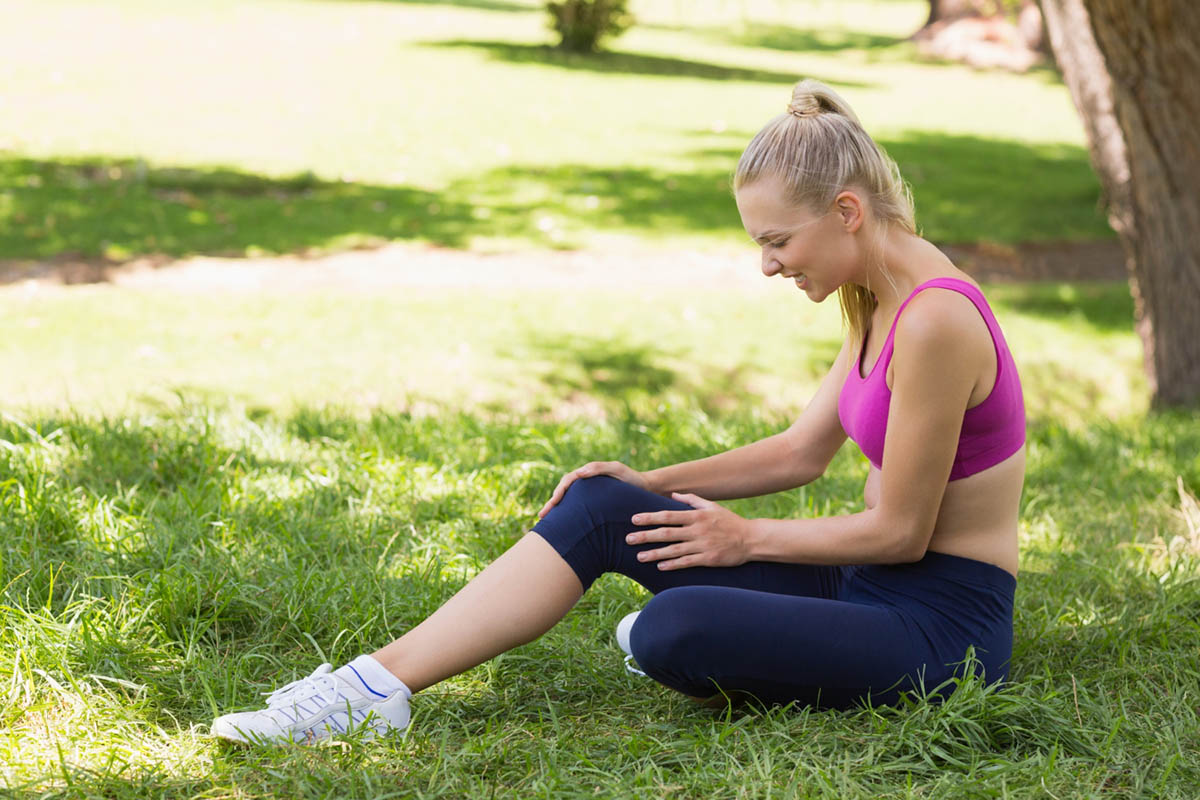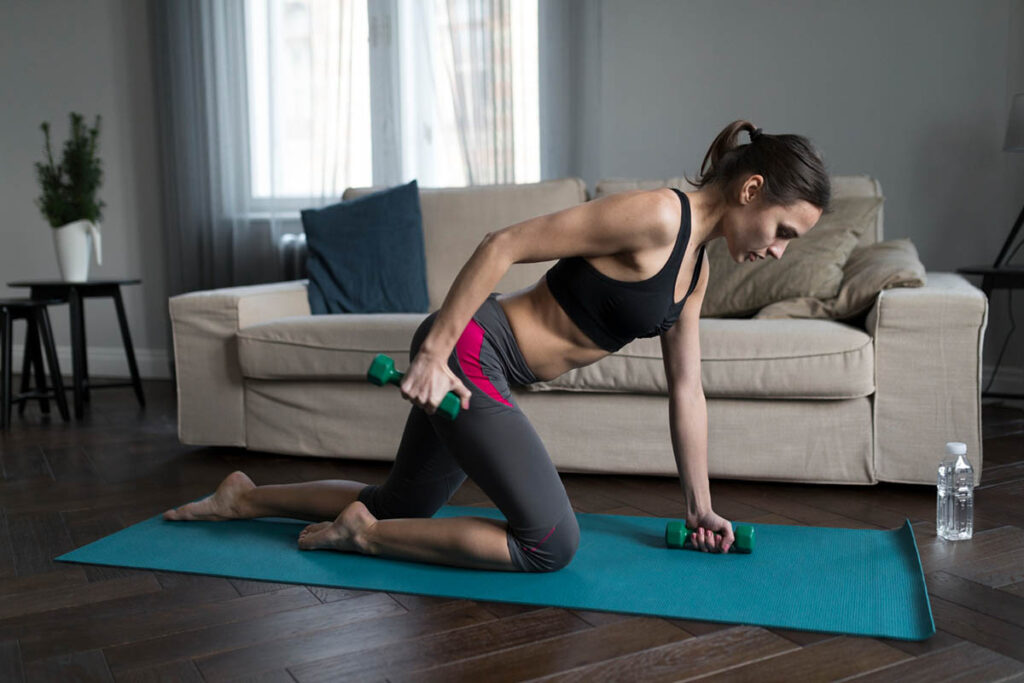Patellar tendinitis, also known as jumper’s knee, is a common knee injury that affects the tendon connecting your kneecap (patella) to your shinbone (tibia). This condition is characterized by inflammation and degeneration of the patellar tendon, often resulting from overuse or repetitive stress. Athletes, particularly those involved in sports that require frequent jumping, running, or abrupt changes in direction, are more susceptible to developing patellar tendinitis. Patellar tendinitis causes significant knee pain and can greatly affect daily activities and athletic performance. In this blog, we will look into some of the most common patellar tendinitis exercises to help alleviate symptoms and improve function.
What Are Common Causes?
Patellar tendinitis is typically caused by repetitive stress on the patellar tendon, which can lead to microscopic tears and subsequent inflammation. Some common causes include:
- Overuse: Engaging in activities that place excessive stress on the knees, such as jumping, running, or cycling, can lead to patellar tendon injury. Over time, this can result in patellar tendonitis pain.
- Improper Technique: Using incorrect form during physical activities can increase strain on the patellar tendon. For example, not aligning the feet shoulder-width apart during exercises can exacerbate the problem.
- Sudden Increase in Activity Level: Rapidly increasing the intensity or duration of physical activity without proper conditioning can contribute to patellar tendinitis. An increase in training volume should be gradual to prevent injury.
- Muscle Imbalances: Weak or tight muscles around the knee, particularly the quadriceps muscle, can contribute to the development of patellar tendinitis. Strengthening the leg muscles can help mitigate this risk.
- Poor Footwear: Wearing shoes that lack proper support can exacerbate stress on the knees, increasing the likelihood of knee pain and injury.
Symptoms and Signs?
Recognizing the common symptoms of patellar tendinitis is crucial for early intervention and effective treatment. Common signs and symptoms include:
- Pain and Tenderness: Pain and tenderness around the patellar tendon, especially where it attaches to the kneecap. This patellar tendon pain can vary in intensity.
- Swelling and Inflammation: Swelling and inflammation in the knee area are common, and often detected through a physical exam.
- Stiffness: Stiffness and difficulty extending the knee can occur, impacting daily activities.
- Pain During Activity: Increased pain during or after physical activity, particularly those involving jumping or running.
- Weakness: Weakness in the knee joint, making it difficult to perform activities that involve knee extension or flexion.
Physical Therapy for Patellar Tendinitis

Patellar tendinitis physical therapy plays a vital role in the management and rehabilitation of patellar tendinitis. It focuses on reducing pain, improving flexibility, and strengthening the muscles around the knee. Here’s how physical therapy can help:
- Pain Management: Techniques such as ice therapy, ultrasound, and electrical stimulation can help reduce pain and inflammation. Adjuncts for pain management may include pain relievers and knee braces.
- Stretching Exercises: Stretching the quadriceps, hamstrings, and calf muscles can alleviate tension and improve flexibility. Using tools like a foam roll can enhance the effectiveness of these stretches.
- Strengthening Exercises: Strengthening the muscles around the knee, including the quadriceps and hamstrings, can provide better support and reduce strain on the patellar tendon. Examples of exercises include quad sets and straight-leg raises.
- Manual Therapy: Hands-on techniques, such as massage and mobilization, can improve circulation and promote healing. Advanced practitioners may use these methods to target specific areas of pain.
- Activity Modification: Physical therapists can provide guidance on modifying activities to prevent further strain on the tendon, ensuring adequate rehabilitation.
Exercises for Patellar Tendinitis
Incorporating specific patellar tendinitis exercises into your routine can significantly aid in the recovery and prevention of patellar tendinitis. Here are some effective exercises:
Straight-leg Raises to the Front
This exercise helps strengthen the quadriceps without placing excessive strain on the patellar tendon. It is an excellent starting point for those experiencing minimal pain. This is particularly useful for managing acute tendon pain and improving functional ranges.
Short-arc Quad
The short-arc quad exercise targets the quadriceps and helps improve knee extension strength. Performing this exercise with an exercise band can enhance muscle engagement. It is an essential part of patellar tendonitis treatment, especially in conservative treatment approaches.
Half-squat with Knees and Feet Turned Out to the Side
Performing half-squats with knees and feet turned out can strengthen the quadriceps and glutes while minimizing stress on the patellar tendon. Ensure your knees bend to a 90-degree angle for maximum effectiveness. This exercise is beneficial for managing chronic pain and improving adaptation to pain.
Step Up
Step-up exercises help build strength and stability in the knee joint. Using a step that is the appropriate height is crucial to avoid exacerbating patellar tendon pain. It is effective in treating patellar tendinopathies and preventing acute injury.
Step Down
Step-down exercises focus on controlled movements, enhancing balance and strength in the lower extremities. This exercise can be particularly beneficial in managing knee pain during daily activities. It also helps in managing tendinopathy in athletes and reducing pain levels associated with patellar tendonitis.
Terminal Knee Extension
This exercise targets the quadriceps and improves knee extension, aiding in the overall stability of the knee joint. Using a knee extension machine or a leg extension machine can provide resistance for this exercise. Isometric exercise methods can be integrated here for better outcomes.
Other exercise methods for patellar tendinitis may include incorporating eccentric exercises and plyometric exercises which can be crucial in treating patellar tendinopathies. These exercises help in reducing patellar tendon pain and improving strength. They are particularly effective in managing sports injuries and enhancing overall knee function.
Effective patellar tendonitis treatment involves a combination of these exercises. Managing acute tendon pain and chronic pain through conservative treatment options is vital. Understanding the source of pain and careful pain monitoring can prevent reaching the worst pain imaginable, ensuring a better adaptation to pain throughout the rehabilitation process.
By integrating these exercises, you can manage patellar tendon pain, improve functional ranges, and enhance recovery from both acute injury and chronic tendinopathy in athletes.
Get Back in Action with Vitality Therapy & Performance

At Vitality Therapy & Performance, we specialize in providing comprehensive treatment for knee pain and related conditions such as patellar tendinitis. Our team of experienced healthcare professionals employs advanced techniques and personalized care plans to ensure effective recovery and long-term health. Through careful pain monitoring, we tailor our approach to each individual’s needs, ensuring that every patient receives the highest standard of care. To learn more about the causes and cures of knee pain, check out our informative blog on Knee Pain: Causes and Cures. Let us help you get back to your active lifestyle with confidence and vitality.
Conclusion
Patellar tendinitis can be a challenging condition, but with the right approach, you can effectively manage and overcome it. By understanding the causes, recognizing the symptoms, and incorporating targeted exercises and physical therapy into your routine, you can pave the way for a successful recovery. Remember, early intervention is key to preventing further damage and ensuring a swift return to your favorite activities. Incorporate energy-storage exercises and engage in load management to strengthen your knee and prevent future injuries.
FAQs
What is the best sleeping position for patellar tendonitis?
Sleeping with your knees slightly bent can help reduce tension on the patellar tendon. Placing a pillow under your knees can provide additional support and comfort, reducing patellar tendonitis pain.
How to make the patella stronger?
Strengthening the muscles around the knee, particularly the quadriceps, is essential for supporting the patella. Incorporating exercises such as straight-leg raises, short-arc quads and step-ups can help build strength and stability. Using eccentric exercise and isotonic exercise methods can further enhance muscle strength.
What not to do with patellar tendonitis?
Avoid activities that place excessive stress on the patellar tendon, such as jumping, running on hard surfaces, and deep squatting. Additionally, refrain from sudden increases in activity level and ensure you use proper technique during exercises. Activities involving heavy load or deep squats should be avoided until adequate patellar tendinitis rehab is achieved.

